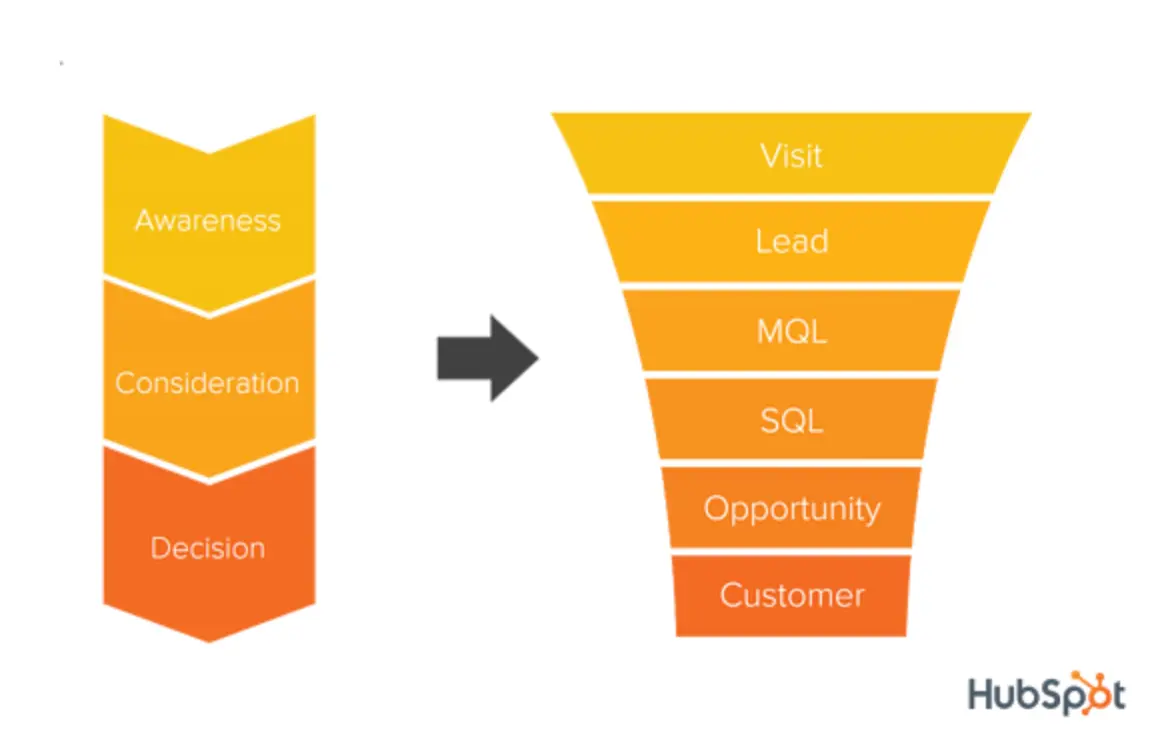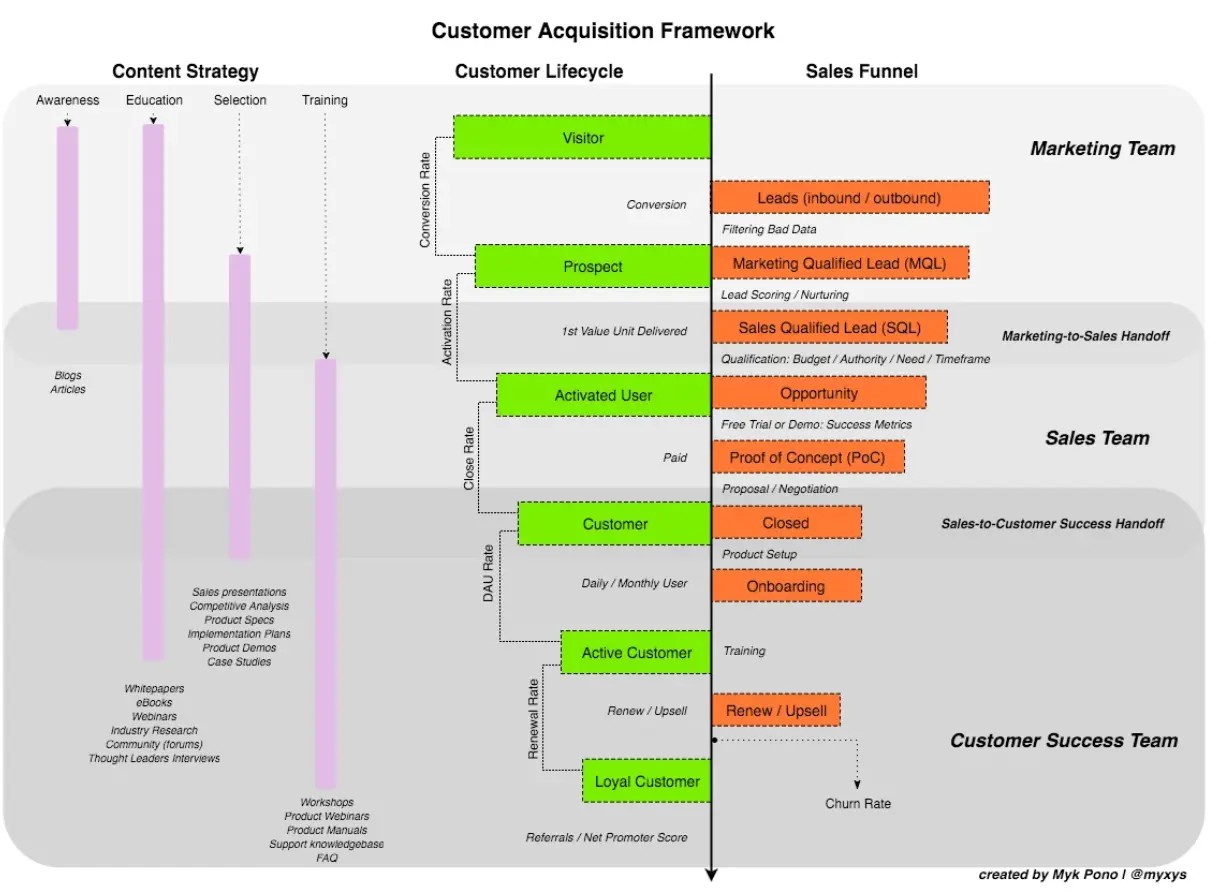According to Belkins, only 10% to 15% of leads qualify as real customers. So, where does the rest, 85% to 90%, go?
They either stay stuck in your sales pipeline, drift toward other options, or don’t get enough of your attention.
It’s only by developing a solid customer acquisition strategy that can help you break the cycle.
5 Key Factors To A Better Customer Acquisition Strategy

Source: Unsplash
1. Customer Lifetime Value (LTV)
LTV is essential in understanding how effective your customer acquisition strategy is. With it, you can calculate the lifetime value of a particular customer, that is, their contribution to the company’s revenue within a lifecycle.
Such a metric helps companies target their audience better and get faster conversions with shorter sales cycles.
2. Customer Acquisition Cost (CAC)
CAC is the amount of money required to acquire a new customer. Knowing CAC helps decide which channels and strategies are most cost-effective and efficient for lead generation.
3. Ideal Customer Behavior, Motivation, and Challenges
Understanding the ideal customer's behavior, motivations, and challenges is vital to developing an effective customer acquisition strategy.
Knowing how potential customers interact with the company, how they purchase the products and services, and what motivates them to buy something is essential for creating a successful acquisition strategy.
4. Long-Term Goals
Businesses should develop their acquisition strategies from the perspective of their long-term goals. It will help ensure the customer acquisition strategy aligns with the company’s mission and vision.
5. Go-to-Market Strategy
An effective go-to-market strategy is essential for successful customer acquisition. Companies should consider which channels and tactics are best for reaching their target customers and how to engage them best.
It considers the right mix of traditional and digital marketing efforts, such as website optimization, content marketing, SEO, and email marketing.
How Does A Customer Acquisition Funnel Work?

Source: HubSpot
As marketers, you live on marketing funnels - be it for assessing your customer journeys or customer retention, or tracking your prospects.
However, leads don’t come in quickly - from mapping customer journeys to educating and nurturing them - a lot goes in before generating a successful lead.
Unlike a sales funnel that only deals with a sales-qualified lead (SQL) - the customer acquisition funnel is a mix of both marketing and sales funnels - and tracks the complete lifecycle journey of a customer.
While a sales funnel with a goal-centric approach is much shorter, a customer acquisition funnel is quite long. It shows every stage of a customer lifecycle.
With a customer acquisition funnel, you can visualize your customer's stage, look at your customer journey maps, and stay updated when they move from one step to another.

Source: Medium
Any customer acquisition funnel has a similar framework with three major stages - awareness, consideration, and decision.
While the awareness stage is about solving and educating your lead’s problems, the consideration stage nurtures the lead and shows the benefits they can reap from your products and services.
Lastly, the decision stage is where you give the final push to your customers toward conversion by showing them how your product or service has helped others achieve their goals.
However, it’s always possible to break down every step and make sub-steps according to the convenience of your strategy.
How Do You Create A Customer Acquisition Strategy?

Source: Unsplash
-
Identify your ideal customers
Before creating a customer acquisition strategy, you should clearly know who your ideal audience is. Take some time to develop a buyer persona that details your target customer segments and their needs.
Before you jump on a strategy, take some time and have honest conversations with them - be it online or offline - because customer experience management should be at the core of your customer acquisition strategy.
-
Set up your goals and objectives
Once you have identified your customers, you need to figure out what you want to achieve with your customer acquisition strategy.
Set key performance indicators (KPIs) that you want to measure and use to track your progress.
-
Choose your customer acquisition channels
Now that you clearly understand your goals and target audience, you must decide which channels to use to reach them.
Common customer acquisition channels include email, search engine optimization (SEO), social media, and paid advertising.
-
Develop a unique strategy for each channel
When it comes to customer acquisition, one size does not fit all. Each channel should have its unique strategy tailored to its strengths and weaknesses.
-
Measure and improve your strategy
Measure the performance of each channel and make adjustments as needed. Track your KPIs and test different approaches to determine what works best for your business.
-
Collaborate with other teams
Customer acquisition is a team effort, so collaborate with other departments in your organization.
For example, your sales and marketing teams can work together to develop a comprehensive customer acquisition plan.
-
Monitor the competition
Monitor what your competitors are doing and adjust your strategy accordingly. It will help you stay ahead of the curve and create a more effective customer acquisition plan.
Top 3 Customer Acquisition Strategies

Source: Unsplash
1. SEO
With the zero-click content trend, people want to avoid moving from one tab to another to read content or watch a video.
Then, why would they like to do that for your website? Indeed, churning out good content is advantageous - but what’s next?
How will you make people read that?
One of the best organic ways to bridge the gap between your content and your ideal audience is SEO.
With the right SEO strategy, it becomes easier to migrate the audience to your website and engage them there!
2. Social Media Marketing
As we all know, social media is all the rage now, and there are good chances to skyrocket your brand’s growth without investing much money.
From LinkedIn to Facebook, Instagram, and Twitter - all these channels serve well to nurture your qualified leads and educate them about your products and services.
Even people with an 80-hour-per-week schedule are getting consistent on social media - thanks to the convenience of social media marketing automation tools we can access.
With the right automation tool, you can analyze the trends, batch-create content for different channels, and schedule them for any time you choose.
So, if you’re struggling with leads stuck in the second or third stage of your acquisition funnel, use your socials to solve their issues and help them move down the funnel faster.
3. Paid Search
As a marketer, PPC marketing or Pay Per Click marketing isn’t a thought under the rock for you - it’s the same as running paid ads but on search engines.
There are several PPC platforms where you can display your ads and partner websites and publishers ready for collaboration.
With the PPC ads, you have a fair chance of displaying them on search engines like Google so that they can get majority actions from the browsers performing commercial searches.
But these ads are quite economical compared to others because you will only be charged for them when someone clicks on them.
Besides search-engine PPC ads, social PPC ads also cater to your customer acquisition strategy. These ads run on various social channels - from Facebook to Instagram and more - with the goal of follower growth and increased engagement.
As there are many social channels, keeping track of all the ads on every channel can be overwhelming. But without tracking the analytics, you would never know which channel works best for you. So, what’s the solution?
Tools like Sprout Social make managing your PPC campaigns on multiple channels a cakewalk for you.
With this tool, you can analyze ad campaign ROI with paid performance reporting by evaluating and reporting on the success of paid social campaigns executed through Facebook, Instagram, LinkedIn, and Twitter.
However, multiple factors, like premium pricing and missing features, can be a roadblock for you.
In that case, there are many Sprout Social alternatives you can go for that offer similar or even better features at better pricing, and that can make managing your paid ad campaigns convenient.
Takeaways
Customer acquisition strategies are essential for businesses to gain and retain customers and grow their business.
By developing a clear acquisition strategy, companies can identify and target customers and create effective campaigns to reach them.
A successful customer acquisition strategy will result in more customers, increased sales, and a more profitable business.
So what are you waiting for? Start crafting your customer acquisition strategy today with the essentials listed in this article!

